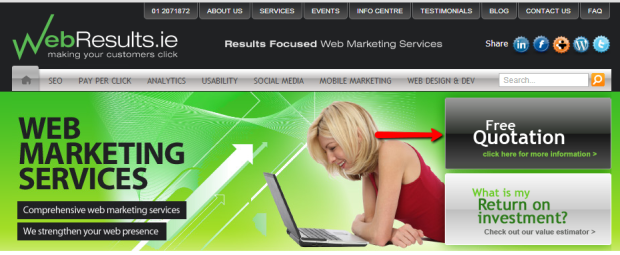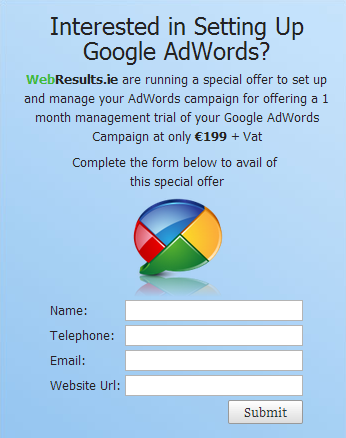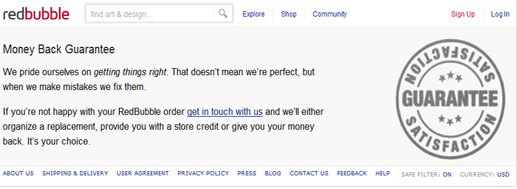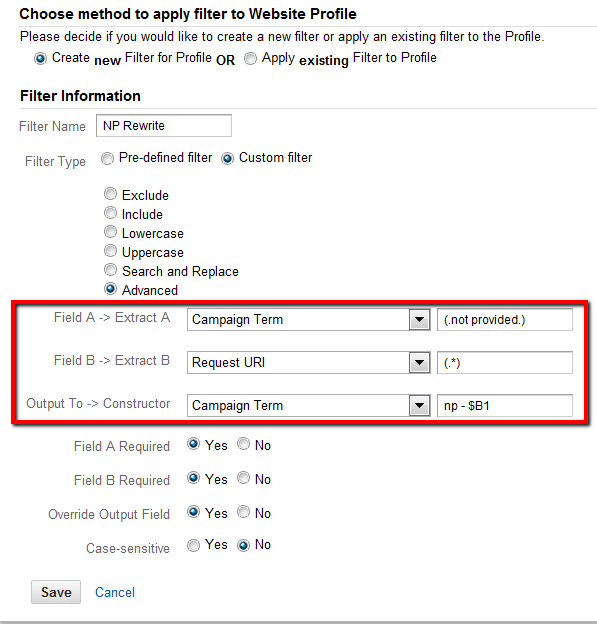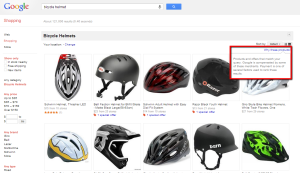Archive for category Web Marketing
How To Increase Website Traffic
Posted by Rosey Broderick in Organic Search Rankings, Search Engine Optimisation, SEO, Web Marketing, web marketing management on Thursday
You have just got your new website and now you find yourself waiting for the influx of traffic followed by all those new leads or orders.
Unfortunately, a shiny new website is no guarantee of any sort of traffic to your website.
So how do your drive high quality traffic to your website. Read some of our top tips for increasing your website traffic to make the process a little easier for you.
1. Set up Google authorship. Google authorship is up there as one of the top traffic strategies of 2014. Sign up to Google plus with your personal profile and then create rel=author on your own website. This will help your articles gain authority in the search engines.
2. To get immediate targeted traffic to your website consider investing in Google Adwords. This is Google’s advertising platform and is a sure way of bringing in targeted traffic to your site along with increasing sales as a result. Keep your Adwords campaign very focused in order to get the best results.
3. Ensure that you have social media profiles set up for your business. Now, before you rush out and sign up to every social media platform out there. Pick the most suitable platform for your target customers and start with this first. It is better to have one social media platform active and performing well rather than spreading yourself too thin across too many platforms.
4. Content. Writing great content is a must in 2014. Create a guide, an infographic or post from an expert such as a guest post.
a) Do your keyword research and make sure you target relevant search terms.
b) Optimise the post including an image, Meta tags and H1 tags.
Make your activity a habit. Start slowly building your profile and engagement with your target market. Be focused on your target terms and you will start to see results in your rankings within Google. At WebResults we have helped many businesses from SME’s to multinationals implement their digital marketing campaigns successfully. Contact us now to find out how we can help you on 01 2071872 or email info@webresults.ie.
Google AdWords for Small Businesses
Posted by Rosey Broderick in Google Adwords, Google AdWords Management, Keywords, Online Advertising, Pay Per Click, PPC, PPC Tips, Web Marketing on Thursday
When it comes to promoting your business services or products on line, this is achievable for small businesses using Google AdWords. Small businesses can even tackle the big guns in their industry for an achievable budget on this platform. By setting up an AdWords account correctly, even a small budget can yield impressions and clicks on Google provided you use the right targeting options and account structure.
The Issue
The main point to understand about Google AdWords is that it is a complicated platform and is difficult to master. Anyone who tells you it is a walk in the park is not telling you the truth, however when implemented correctly it can bring great results to your business objectives. Don’t get me wrong. Anyone can go in and set up a campaign. However, to maximise it and make it work for most businesses AdWords takes careful planning and practice to master which can take time. Time most business owners just don’t have, in addition to their already loaded work schedule. This is one of the reasons there are so many businesses who don’t think AdWords really works. However, with time, effort and patience your Google AdWords campaign can yield great returns and there are many businesses out there who have increased their profits dramatically and others who use it as their main advertising medium.
Keep It Simple
What a lot of business owners think about AdWords is that you need to have a huge account with hundreds of keywords in it or a huge budget. The fact is, you don’t need a huge campaign to be successful. If you have an AdWords account with too many words and not enough time to manage it you will most probably overreach and waste money. The best approach is to start your campaign small and over time as you become more comfortable with the platform gradually grow your account. Obviously the size of your account deciphers how much time is required to manage it.
Tracking Your AdWords Progress
One of the best pieces of advice we can give you is to track your AdWords account. By this we mean setting up a Google Analytics account for your website so you can get accurate data on your visits, users etc. You can then link your AdWords and Analytics account and monitor the return from your AdWords campaigns. Also set up AdWords Conversion Tracking which gives you data on your Campaigns, Ad Groups, Ads and Keywords. This tracking informs you of clicks and conversions from specific keywords and gives you a great insight into how each keyword or Ad Group is performing.
Don’t Overreach
Keep your account manageable and don’t try to overreach. This can happen in a number of situations such as miss-targeting your ads. Be it network, location, device targeting or even down to the match types used for your keywords, incorrectly targeted ads will guarantee to lose you money. It is always best to plan your account and target your campaigns towards pre-qualified search users, by doing this you will get higher click-through rates and hence higher conversions.
Don’t Overpay – Set A Consistent AdWords Budget
Getting to the top of Google SERP page is not essential in AdWords campaigns, it probably won’t even be a reality when running your campaign on a small budget. So our advice is to take a step back and look at your budgeting realistically. Firstly, set a daily budget that will determine how much you will pay over the month. In AdWords you decide your monthly budget and divide it by the number of days you are running your campaign in the month, to get your daily budget. The budget must tie in with your businesses financials e.g. don’t spend more on clicks that will eat into your company profit unless you have a strategy in place to drive return on investment whether in the short or long term.
By careful planning around your budget. Set up your campaign clearly, this will reduce your time and effort around changing your budget. Also bear in mind if you keep changing your budget it means Google has to recalibrate how it shows your ads and hence can impact negatively on your account.
Google will suggest increasing your budget in order to increase your clicks. Before doing this, ensure that the clicks you are targeting will drive the right traffic for your business.
Bidding In AdWords For Small Businesses
Bidding is a very important factor in determining your ad positioning so it is essential that you calculate correctly how much you will be bidding based on your budget to ensure an ROI. Here is a nice formula to work off:
Revenue or Customer’s LTV * conversion rate = Max Bid
Once you have decided on your maximum bid, your quality score will determine your ad positioning. The higher your quality score, the more likely you are to rank towards the top of the page.
Next Steps
Now having made informed decisions on your targeted traffic, budget calculated and set correctly and bidding set, you are on the way to running a profitable AdWords account.
If you need help setting up or managing your pay per click campaigns, contact WebResults. We have dedicated PPC specialists with the expertise to get your AdWords campaign working for your business. Call us on 01-2071872 or email us at info@webresults.ie
How to increase Ecommerce Sales and Traffic
Posted by Rosey Broderick in Ecommerce, Facebook, web marketing management on Friday
 Do you want more online sales?
Do you want more online sales?
Are you thinking of setting up an ecommerce store for your business or do you already have one that is not delivering to its potential?
Are you wondering how you should set up your ecommerce site so it can maximise every website visitor, every sales opportunity?
Is your site ready to sell, you just don’t have the traffic you should?
1. Use your Facebook profile to share a link or image back to your online store.
But be creative about how you use it. Link to a tweet from a happy customer. It is proven that sharing images on Facebook outperforms any other type of post. Try to add some sort of text overlay to the image which will get people interacting with the image – “Which Spring trends do you prefer” or some question about the images/products.
3. When you’re selling your products try and let the customer visualise themselves with your product. So if you are selling bikes you could have a couple of people cycling on the bikes through a park or if you are selling mirrors you could use a picture of your mirror on a wall in a house surrounded by a warm family atmosphere.
4. Just like all conventional retail stores try placing similar selling items together so that your potential customer can get an overall feel for your product. Try to recommend related products and upsells. Getting your customers to buy additional products is always a plus.
5. Consumer research has shown that over 40% of Facebook users will like or share something in order to get a discount. So try encouraging your current fans to share your special offers or seasonal promotions by running competitions as this will bring back new potential customers to your page. Running time sensitive offers or limits on the amount of a certain product that will be sold at a discounted price can also work to increase shares and sales. Facebook advertising targeting your current group of fans is also the lowest way of advertising on Facebook.
6. Another great way of increasing shares and likes can be running a caption contest. Simply include a post on Facebook and ask people to come up with a caption that best fits the picture. Including a link back to your online store within this post can also increase visits to your website. You could also offer free shipping to your customers with a time sensitive offer as well.
7. Make sure your product descriptions are descriptive and engaging. It is important to write your own descriptions, as this gives Google a reason to index your site and choosing the right keywords can help you get found in Google search.
8. Did you know the most frequent page people exit on ecommerce sites is the checkout? In order to keep your potential customers at this vital stage, make sure you have your checkout process down to a fine art. Have the cheapest shipping option at default, make it easy for returning customers to sign in, and be honest about shipping costs. Include a handy search feature. Be sure it works to deliver accurate / relevant results. Monitor search queries to ensure you use popular terms to target other potential customers.
Make sure it takes as few clicks as possible to complete a purchase. If visitors do leave, you can use remarketing to target those people who do abandon your checkout.
Carry out regular analytics by closely monitoring user behaviour and navigation paths on your site, and use the results of such analytics to constantly improve the purchase process.
9. Is your site optimised for tablets and mobile?
10. Consider using PPC advertising for your ecommerce site and set up ecommerce conversion tracking. You can incorporate lead generation conversions to ensure your keywords are working if there is a gap between people who are searching and then purchasing.
11. Be sure landing pages from any campaigns are relevant, compelling and match whatever offer that was promised from the advertising copy or link.
Follow some of the tips above to increase your online sales and share your experiences with us.
At Webresults.ie we identify the best digital marketing strategy for your business, in order to achieve maximum results.
If you would like to grow your business through the web in 2014 contact WebResults.ie now for a Free audit of your website. We will identify any weaknesses that exist and offer some pointers on how you can drive your business to its full potential on the web.
Tips on Increasing User Signups
Posted by Rosey Broderick in Web Marketing, web strategy, Website Usability on Tuesday
How to Increase user signups:
There are many different changes that can be made to one’s webpage to try to increase your signups, such as free newsletters or free trials. These kind of signups are easy to include on WebPages, and don’t require extensive coding changes.
Here are 5 simple tips that will boost your signups and in turn increase your conversions.
Make Your Call to Actions Obvious:
Within a signup page, a clear call to action is vital. Without it, the process becomes redundant as visitors don’t want to spend time trying to figure out how they go about signing up.
Differentiate your call to action from the rest of the page. Use contrasting colours, a larger font and prominent positioning for the best results.
Keep Your Signup Form Simple:
You will know yourself from past experiences, when faced with a long and complicated signup form; you are more than likely going to leave that page. Try to stick to essential information only, if no money is involved then just look for their name and email address. With money involved just ask for the bare minimum required by your credit card processor.
Offer a Guarantee:
Offer a guarantee on the product or service the customer is signing up for. If it is something a free newsletter then show a guarantee that you will not share their email with anyone else and also tell them that they can opt out of the newsletter at any time. This can help build trust between your brand and customer.
For paid products, offer a guarantee of 30 – 60 days if possible so that customers will feel more secure about purchasing your product.
Use Popup forms:
Short and simple popup forms can be a great way of having a visitor sign up to your service in a quick manner. By producing a short form through a modal window, the visitor may see how easy it is to sign up and opt in there and then. This also takes out the hassle of having to navigate their way through your site looking for a signup form.
Offer Incentives:
Let’s face it, we all like free things! Offering a small incentive for users to sign up to your subscription can greatly improve conversions. Even small incentives such as a free trial or consultation can be enough to entice a visitor to sign up.
At Webresults.ie we offer a wide range of digital marketing services such as PPC and SEO. If you have any questions on how to increase signups on your site or ways of improving traffic to your site, please contact us.
An Overview of Mobile’s Importance in Digital Marketing
Posted by Rosey Broderick in Google Adwords, Mobile Application, Mobile Marketing, PPC, SEO, Social media, web strategy on Thursday
Rise in Mobile: An Overview
Mobile is growing faster than any other technology before it. Smartphones are quickly developing with 47% Irish people currently owning one (Mediascope, 2013). Smartphones are the perfect medium for those wanting to access the web while on the go enabling people to always stay connected. Approximately 1.2 million Irish people go online using a mobile device (Mediascope 2013). This creates an ideal opportunity for marketers to attract those browsing the web on their phones through mobile marketing.
one (Mediascope, 2013). Smartphones are the perfect medium for those wanting to access the web while on the go enabling people to always stay connected. Approximately 1.2 million Irish people go online using a mobile device (Mediascope 2013). This creates an ideal opportunity for marketers to attract those browsing the web on their phones through mobile marketing.
This means companies must make their websites mobile responsive so these potential customers can access your site through their phones. Those browsing on their phone do not want to have to pinch and grab their way through a site. On clicking through to a site on their mobile, they should be brought to a site which is fitted to suit the size of their screen. Once set up correctly this will be done automatically.
Google have also been quick to consider mobile devices when delivering search results. If Google is aware that a search is being conducted on a mobile device, then it filters search results to cater for those on the go. This is particularly effective for those with paid Google Adwords campaigns.
Tablets such as Ipads are also constantly growing in use with 12% of Irish people currently going online on a tablet device (Mediascope 2013). These devices are known to be used more frequently at home, particularly in the evening time for browsing the web.
This rise in mobile should also be considered when using email as a component of your marketing strategy. In research done by Litmus, they found that email opens on smartphones and tablets have increased 80% over the last six months. People who are opening emails on their phone are unlikely to download any image attachments which accompany emails. This means that your email campaign should aim to get its information across textually without relying on fancy imagery, as to accommodate your mobile audience.
Why use Mobile Marketing?
Reach a wider audience:
When using mobile marketing as a part of your marketing strategy, you can now reach a wider market of consumers who are constantly on the go. This is a very specific type of consumer, but also a vital type.
Stand out from the competition:
Mobile marketing is growing fast however a majority of sites are unresponsive to mobile; it would therefore be refreshing for a mobile consumer to come across your page which caters to their needs. A small improvement such as this can reflect well on your business.
Bridge the gap between Offline and Online:
Mobile marketing is unique in that consumers can instantly react to traditional advertising campaigns. If a person where to see a poster advert at a bus stop, by placing a QR code on that poster, then the customer can scan it and be taken directly to a specific area of your site.
If you have any enquiries about mobile marketing or any other digital marketing services, please contact us
How to Solve The “Not Provided” Problem in Google Analytics
Posted by Rosey Broderick in Analytics, Analytics Tools, Google Analytics, Keyword Analysis, Keywords, Organic Search Rankings, Search Engine Optimisation, Search Engines, SEO, SEO Tools, Web Marketing, web strategy on Tuesday
Google Analytics: The “Not Provided” Problem
Google analytics is a fantastic tool for viewing visitor trends and behaviour. It helps you to figure out what your website is doing right or wrong, and to see how effective your current SEO strategy is performing.
The one problem many people have with the service is its organic search terms report. In this report, you can see what search terms are giving you the most visitor traffic. However throughout this report the term “not provided” regularly appears and the content is not accessible to the business, although this information is available to those who have a paid premium account.
Why is this data hidden?
In 2011 Google updated their privacy settings, focusing on protecting those with a Google account (Gmail, Google+ etc). If a person conducts a web search through Google whilst they are logged into a Google account, then their search is conducted over a Secure Socket Layer (SSL), therefore the referral data relating to that search is hidden.
This referral data contains some very useful information, such as the keywords used to perform that search. This data is however only viewable to Google and those with a premium analytics account.
There are ways around this for you with basic accounts. One such way involves analysing landing page results. This involves mining through Google Analytics for other information that will reveal more about who your visitors were and what they were doing on your site. This involves 3 steps;
- In your Analytics account, head to Admin, then Profiles.
- Click the name of the profile you want to work with, and select the Filters tab.
- Create a new filter in your Analytics account and follow the guidelines in the image below:
After applying this filter, future keyword reports while provide some more useful information. Instead of “not provided” appearing in the report, it will be presented as
“np – / landing page”.
While this doesn’t reveal the actual search term used by the visitor, it does show you what page within your site appeared in their search result. This can give you the information of which pages within your site are appearing on search results. This new data will only be presented like this for future reports.
Why use Google Analytics?
Measure Your SEO performance:
With Google Analytics you can analyse your current SEO strategy and see what keywords are working for you. It will also show which pages on your site are most popular. You can assess the amount of traffic coming into your site, and quantify goals and conversions. If you have any questions regarding Google analytics, please contact us.
Measuring SEO Success
Posted by Rosey Broderick in Analytics, Analytics Tools, Google Analytics, Keyword Analysis, Keywords, Organic Search Rankings, Search Engine Optimisation, Search Engines, SEO, SEO Tools, web strategy on Monday
Measuring SEO Success:
Having put a lot of time and effort into devising a SEO strategy, it is now time to measure how effective it actually was. To do this there are three key performance indicators (KPI) to look at; 
- Rankings
- Traffic
- Conversions
The information gathered from these KPIs can be used to both measure the success of this campaign and provide valuable information for future campaigns.
Rankings:
Keyword rankings are a key component of the SEO process with the websites who are listed on the first page receiving up to 92% of the traffic share (Searchengineland.com, 2012). Over time a business can track keywords and see how effective each are with the ability to change them at any time. Keyword analysis involves some trial and error as a business might find out overtime that a keyword is just too broad and competitive for their business to rank high for.
Traffic:
Having your site appear on the first page of a search engine isn’t enough to classify a SEO campaign as a success. The traffic volume and quality of a search term must also be analysed. Traffic volume should be measured based on the number of visits that come from organic search. With a successful SEO strategy, there should be a significant increase in organic search traffic over time.
How much traffic you should expect depends on the size of your target audience. For example, a successful SEO campaign that targets people who are looking for a nationwide online retailer will deliver significantly more organic search traffic than a successful campaign targeting people who are looking for a local hairdresser.
Within this volume of traffic, the quality of the traffic must also be analysed. Some areas of interest when determining the quality of such traffic include, pages per visit, average visit duration and bounce rate. You are essentially looking for a high average duration with a large amount of pages visited whilst keeping your bounce rate low.
Conversions:
Through web analytics you can determine what you consider to be a goal or a conversion. This could be something like a visitor completing a subscription form or contacting the business. When these conversions are set up by you, you can use Google Analytics to track and record each conversion as it happens. You can even track each page a visitor viewed leading up to the conversion to see what links they clicked on etc, this can be done with tools such as mouseflow. Sales aren’t essential from first time visitors, it is good to make them aware of your brand and have them complete some form of conversion which will keep you in their minds for future reference. After analysing your conversions you can also pinpoint which keywords from organic search results attracted each visitor.
Conclusion
Tracking these KPIs will not only allow you to measure your SEO campaign’s current performance, but it will also provide you with vital data to help ensure your next campaign is a success. For more information on measuring SEO or any other marketing activities, please contact us
Inbound Marketing Essentials
Inbound Marketing Essentials:
Inbound Marketing is seen by many in the industry, as an essential tool for naturally attracting a wide range of potential customers.  Inbound Marketing is a non aggressive approach to making your business known to new customers and forming a bond with current ones. When it comes to good Inbound Marketing practice, here are some of the essentials.
Inbound Marketing is a non aggressive approach to making your business known to new customers and forming a bond with current ones. When it comes to good Inbound Marketing practice, here are some of the essentials.
Know Your Customers:
A huge factor of Inbound Marketing is providing relevant and useful content / information for your target market. To do this you need to know who your customers are and what they are interested in. A breakdown of customer demographics and interests would be ideal.
Research Keywords Relevant to you:
Carry out a keyword analysis for words and terms associated with your business. The objective is to target keywords with a high search rate. Have your keywords as specific as possible to approach your target market rather than approach a broad and unreliable market.
Have a Strategy for your Content: (Know your Objectives)
Be sure to speak to your customers about content relevant to your industry. Your aim is to speak to each customer type at each level of the “sales funnel” (Leads – Opportunities – Proposals – New Customers).
Create Content Frequently:
Your aim is to now create educational, thought provoking content related to your business area. Think of what you would be more likely to share or comment on, don’t focus on sales and talking about what you do. You need to be doing this at least once a week to keep your site fresh.
Insert Links:
Having both internal and external links throughout your content can both help with user experience and encourage inbound links from those external websites. Try to fit in maybe 1 or 2 links in your content.
Include Images:
Images help break up the content for the reader making the content more presentable when done correctly. Include an image title and alt text so that search engines can pick them up.
Incorporate Calls to Action:
After reading your piece of content, give the reader something to do or somewhere to go, ideally back to your website!
Share on Social Media:
Social Media sites provide a great platform for you to get your content out there and shared. It is a great opportunity for creating more inbound links to your site.
Why use Inbound Marketing for Your Business?
Build Your Business Profile:
Present your business as the experts in your field offering relevant, helpful information, updates, tips and advice. Generally information that is helpful to your clients and prospects when they are in the market for your products/services.
Give Personality to Your Brand:
Inbound marketing enables companies to express themselves in an informal manner. They can show what their company is passionate about and what motivates them.
Build Your Business Profile on the Web:
By offering interesting, engaging content, your contacts and followers will share your information with their contacts, building your community and getting your business in front of new prospects.
Engage With Customers:
Inbound marketing enables your company to engage with your customers on personal level
and build strong relationships. It makes your company more approachable to the public.
Improve Your SEO:
Effective inbound marketing will improve your SEO. The search engines are placing more and more priority on social media activities and links when presenting search engine results. By focussing on the terms that are most relevant and building content around them on both social networks and your site, you will build up your rankings on the search engines for terms most relevant to your business. At Webresults.ie we can help you create a successful content strategy that will maximise your SEO and social media activity to drive sales for your business.
If you would like to find out how to devise and implement a successful inbound marketing strategy for your business that will build your profile and drive more high quality customers to your business, please contact Webresults.
What is Product Listing Advertising (PLA)
Posted by Rosey Broderick in Display Advertising, Google, Online Advertising, Pay Per Click, PPC, PPC Tips, PPC Tools on Thursday
Product Listing Ads (PLA):
PLA is a pay per click (PPC) form of advertising. This form of advertising is carried out through Google’s Shopping Tool. Upon a relevant search query from a customer, Google will show up placed ads first. In this shopping tool, Google will include
“richer product information such as product image, price and merchant name” (Google 2013)
The search to the right shows the results for the search “bicycle helmets”, where placed ads are shown first. The fact that these ads are paid for, is only revealed when you click on the link “why these products” which explains that these are placed ads, as highlighted in the image to the right.
PLA is another form of PPC where the advertiser only pays Google after someone has actually clicked on their ad. The advertiser and Google will have agreed a set price for every click on their ad. The advertiser can also set a limit on how much they are willing to spend each day, ie:
Razor is willing to pay 50c for every click on the advert for their helmet. However they are only willing to spend €5 per day, so after 10 people click on their ad, the ad will be taken down until the next day. (There are options to choose when the ads are displayed or to spread the display over a period of time). They will also agree the amount of time the ad will run for, which can range anytime from hours to years.
Why use PLA?
Cost effective advertising:
With PLA you are only paying for people who click through to your site, a concept which has high rate of return on investment (ROI). At Webresults, we can help you arrange a pricing plan for your proposed ad
Place high on the list:
With PLA you will appear high on the search results with people seeing your product first
PLA weans out lesser competitors:
Google’s Shopping tool’s main appeal to customers is that it shows the best options first. Google users don’t have to thralls through pages to find what they want. Your products are seen at the top of their respective search
When it comes to PLA, it pays to pay!
For more information and advice on PLA, contact us!
Social Media Marketing World Event April 7th – 9th, 2013
Posted by Rosey Broderick in social media event, Web Marketing Events on Friday
 The Social Media Marketing event is one of the most important events of the year in digital media industry. Businesses will have the unique chance to network and get tips on new business strategies relating to social media from the biggest names and brands in the industry. Read the rest of this entry »
The Social Media Marketing event is one of the most important events of the year in digital media industry. Businesses will have the unique chance to network and get tips on new business strategies relating to social media from the biggest names and brands in the industry. Read the rest of this entry »

